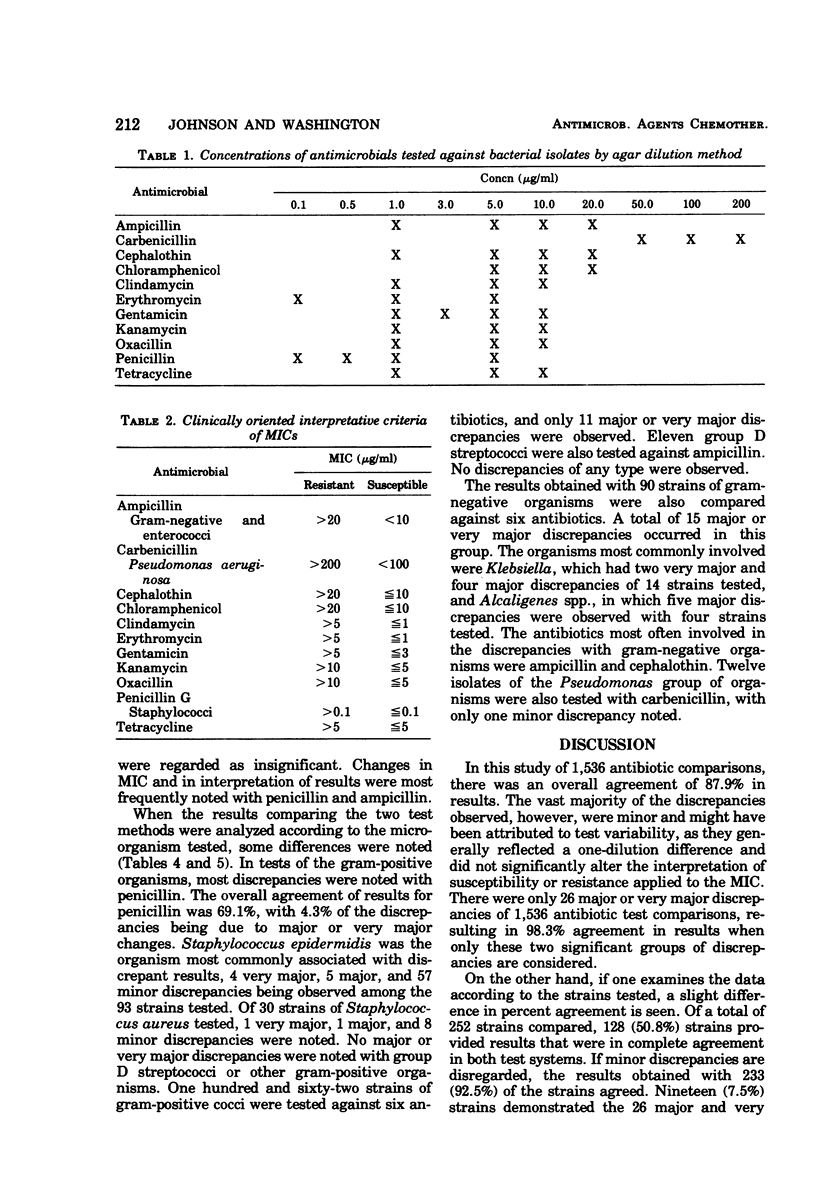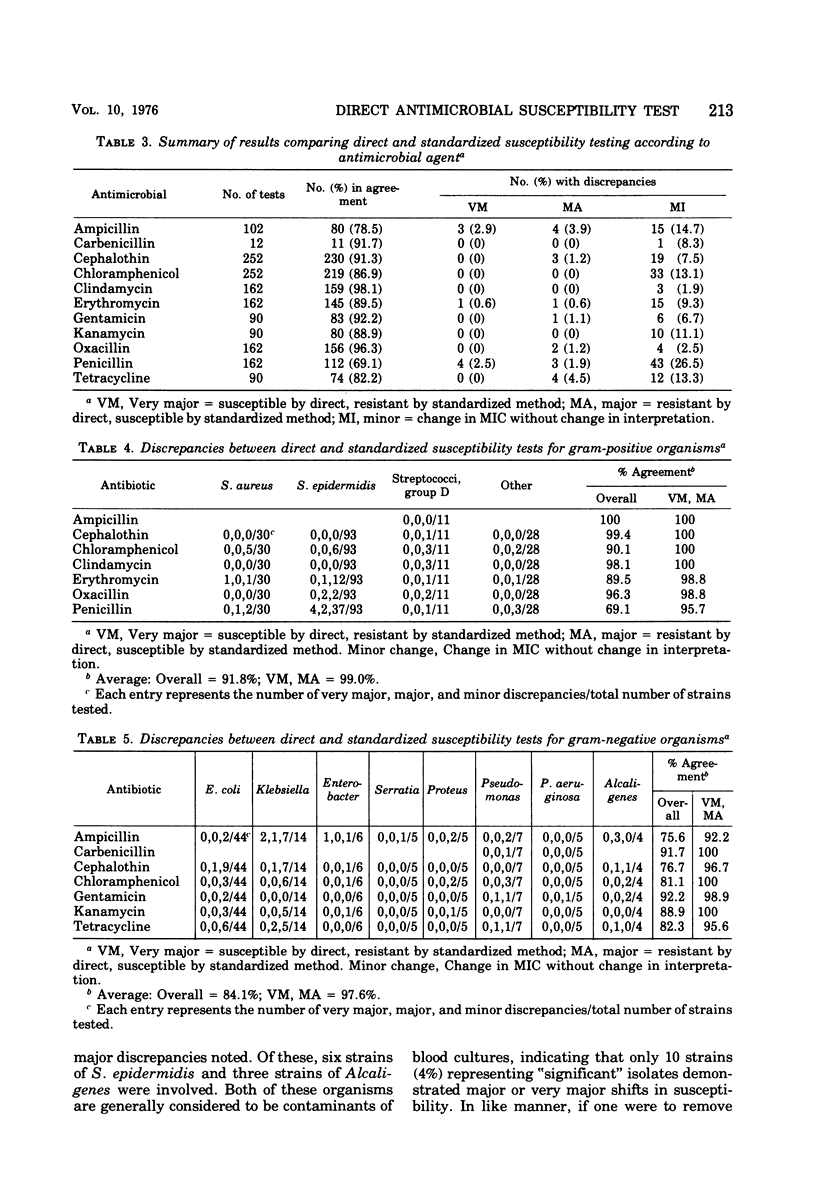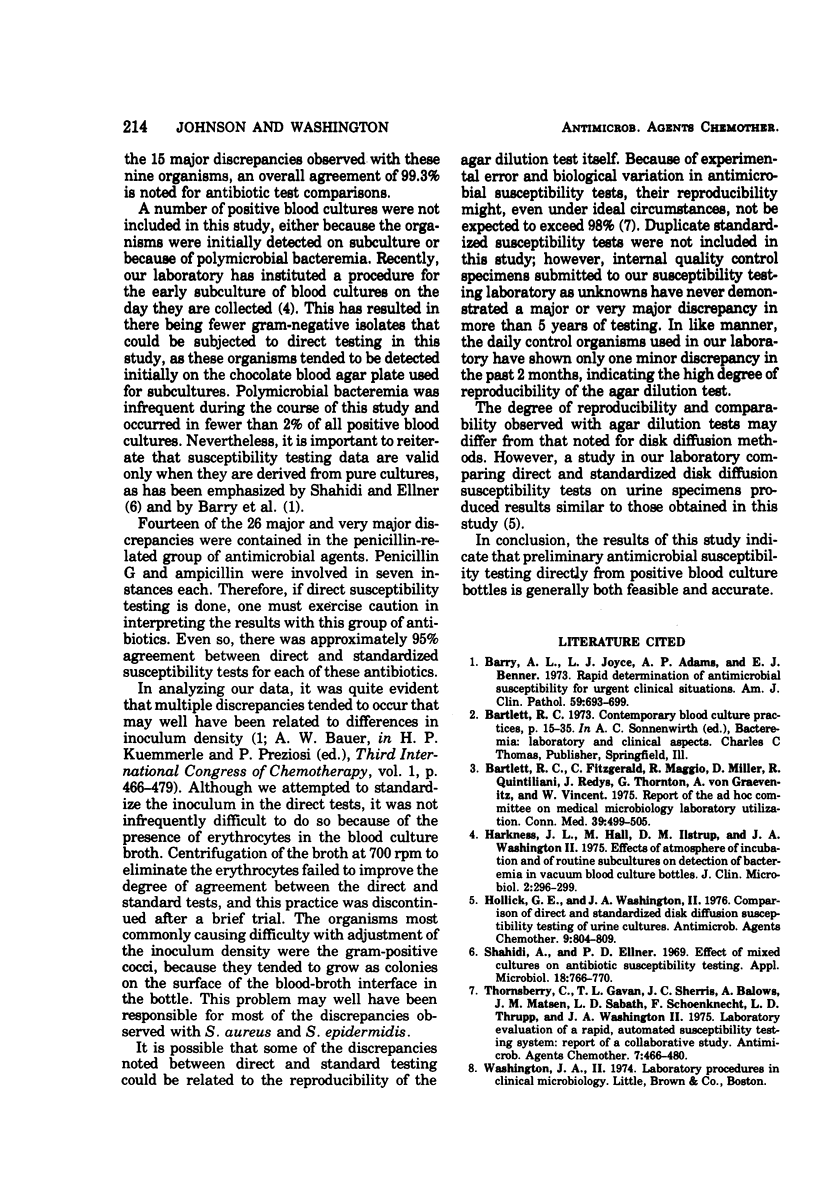Abstract
In an effort to determine the feasibility and accuracy of performing direct susceptibility tests from positive blood cultures, minimal inhibitory concentrations (MICs), determined by the agar dilution method, of direct and standardized tests with seven antibiotics were compared. Results were analyzed as to the number of very major (change in MIC from susceptible in preliminary direct testing to resistant in final standardized testing), major (change in MIC from resistant to susceptible), and minor (change in MIC without change in interpretation) discrepancies. The results for gram-positive cocci and for gram-negative bacilli were 5, 6, and 82 of 162 strains tested and 3, 12, and 79 of 90 strains tested, respectively. Of the total number of susceptibility tests compared, major and very major discrepancies occurred in only 1 and 2.4% of instances with gram-positive and -negative isolates, respectively. The majority of discrepancies were noted with Staphylococcus epidermidis (four very major, five major), Klebsiella (two very major, four major), and Alcaligenes (five major). The antibiotics most often exhibiting discrepancies were penicillin, ampicillin, and cephalothin. The results indicate that preliminary susceptibility testing directly from positive blood culture bottles is generally both feasible and accurate.
Full text
PDF



Selected References
These references are in PubMed. This may not be the complete list of references from this article.
- Barry A. L., Joyce L. J., Adams A. P., Benner E. J. Rapid determination of antimicrobial susceptibility for urgent clinical situations. Am J Clin Pathol. 1973 May;59(5):693–699. doi: 10.1093/ajcp/59.5.693. [DOI] [PubMed] [Google Scholar]
- Harkness J. L., Hall M., Ilstrup D. M., Washington J. A., 2nd Effects of atmosphere of incubation and of routine subcultures on detection of bacteremia in vacuum blood culture bottles. J Clin Microbiol. 1975 Oct;2(4):296–299. doi: 10.1128/jcm.2.4.296-299.1975. [DOI] [PMC free article] [PubMed] [Google Scholar]
- Hollick G. E., Washington J. A., 2nd Comparison of direct and standardized disk diffusion susceptibility testing of urine cultures. Antimicrob Agents Chemother. 1976 May;9(5):804–809. doi: 10.1128/aac.9.5.804. [DOI] [PMC free article] [PubMed] [Google Scholar]
- Shahidi A., Ellner P. D. Effect of mixed cultures on antibiotic susceptibility testing. Appl Microbiol. 1969 Nov;18(5):766–770. doi: 10.1128/am.18.5.766-770.1969. [DOI] [PMC free article] [PubMed] [Google Scholar]
- Thornsberry C., Gavan T. L., Sherris J. C., Balows A., Matsen J. M., Sabath L. D., Schoenknecht F., Thrupp L. D., Washington J. A., 2nd Laboratory evaluation of a rapid, automatic susceptibility testing system: report of a collaborative study. Antimicrob Agents Chemother. 1975 Apr;7(4):466–480. doi: 10.1128/aac.7.4.466. [DOI] [PMC free article] [PubMed] [Google Scholar]


